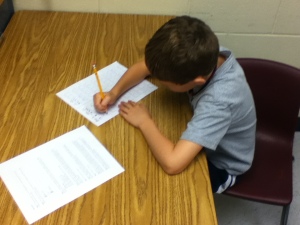This is a story about two cardboard boxes and a woman who went without social media for two weeks. What happened, you ask? A marathon crafting session of epic proportions…
It was a regular Friday afternoon. I had gone without social media for several days now and had checked a lot of work off my to do list deciding it was time to give my brain a nice long break. When I give my brain a break though it usually entails doing a mindless yet productive activity to keep my hands busy. I love to build with my hands, crafting, woodworking, gardening, automotive and electrical work, it makes me happier than a computer ever would. I even have a few years of experience working as in an electrical supply store lighting showroom maintenance and sales person fixing ceiling fans, selling and maintaining light fixtures, etc. Well, My students had recently issued a dare to me knowing I was at least going to ponder it..it went past the pondering stage and into reality and I’m going to show you how I did it:
That’s right, BOOM CHICA BOOM a Quaver Music Shop Phone Box. I made this one from scratch! Here’s what you need to make one yourself:
-Two large moving boxes from Lowe’s
-Lots of duct tape
-Lots of pictures of composers and a control unit for ultimate time travel.
-A box cutter
-Spray paint
-Construction paper
-4 Foam core boards with the word “Telephone” painted on one side.
-aandd I know this is gonna be hard but grab that lasso and go get yourself a mighty fine black hole to harness it’s awesome time travel power. I’ve got 8!
First what you have to do is to duct tape those two boxes together to make your shell.
Make sure to cut a door so you can get in and out of it. BE CAREFUL, one wrong move and you are caught in that box like a mouse in a mouse trap.
Help!I’m stuck!
Next is the windows, a real phone box has that pattern of windows on three of the sides including the side with the door. My box has 5 rows of windows on each side with a window pattern of small-big-small on each level.
I used a regular box cutter to cut out each window after I measured them all out. Be VERY careful when using the box cutter though, especially if you’re accident prone!:
PacMan Kisses Make it all Better
NEXT we inhale some spray paint, JUST kidding..well just don’t sit inside that thing without a respirator..I made that mistake and am still sneezing black! I had 3 cans of red for the outside to get a nice glossy red coat and 1 can of black covered the inside nicely. Do it outside and make sure to wear icky clothes..and a respirator..yup DON’T FORGET THE RESPIRATOR!
After I let the box dry for at least a few hours, I grabbed those 4 foam core boards that had Telephone painted on them and glued them around the top outside of the box and clamped them gently so they would not fall.
As those were drying I chose to cut plastic wrap out and glued it to the inside creating that window effect. (You do not have to do this part it will look pretty similar without it.)
When everything is dry it is time to lasso those black holes and paste them to your ceiling in order to create and cool effect when the students look up so they feel like they are traveling back in time with Quaver. I also lined the border of the pictures with black construction paper to give a neater appearance. After the ceiling is done crawl right in there and start glueing your favorite composers to the back in a nice display. I found all of my pictures here: Composer coloring sheets (I also lined these pictures with black construction paper to give a neater appearance)
NOW you’re almost there! I took a screen grab (you can draw your own) of the controls in the phone box on the website which I pasted to a manila folder and duct taped to the inside of the box. In the folder I personally printed out packets of information on the different composers and some things about madrigals. You can put anything in there you wish students to discover.
BOOM CHICA BOOM! YOU ARE DONE!
Strange students/sisters might “accidentally” get stuck in there.The eject to the 1500s button is located on the roof OR put it out of reach until you want to have it used.
Happy Crafting!















